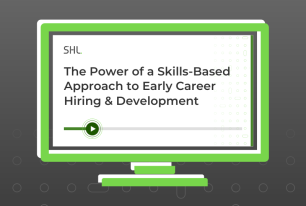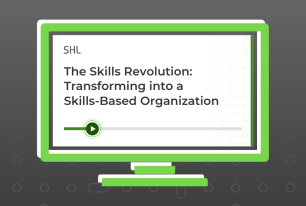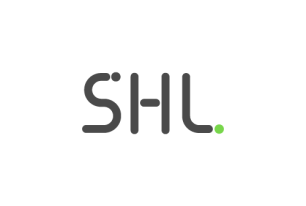Talent and Careers Strategy for Skills of the Future
With fewer workers and increasing hiring costs, businesses must think differently about getting the most from their talent—General Mills share how they prioritize future-fit capabilities when hiring and empower their employees to lead their own development with a skills-based approach.
Share
A Skills-Based Approach Helps Future-Proof Your Organization From Inevitable Change
Creating strategies that can maximize an individual’s potential and enable them to be reoriented to evolving business needs is a key talking point for organizations today.
With a skills-based approach, there is less focus on academic credentials or years’ experience and more on the skills that an individual has, and how they can be leveraged. Organizations can hire, promote, and develop individuals by considering potential, creating a workforce that's more at ease with an exponential pace of change.
There are lots of different ways to get detail and data on skills. They can be inferred by AI for example, based on what people have done before, but the real value comes from assessments that can bring to life the skills that people can demonstrate but haven't demonstrated yet—i.e. provide a measure of potential. Assessment instruments that can give a forward-looking objective view on skills can be a powerful tool in the toolkit.
We spoke with Richard Chambers, Talent Director at General Mills about their strategy for talent management and how a skills-based approach, leveraging talent data, is used to get the most from their talent and empower them to lead their own development.
What Is Your Approach To Talent Management At General Mills?
At General Mills, we continuously adapt and rethink how we do things, so we need individuals that have that adaptability and resilience. In addition, we want individuals that can evolve through continuous learning and development.
It is important that people feel like they can have a long tenured career here should they wish to stay. We're still going to be savvy and make sure we're protected from a pipelining standpoint if people choose to move on, but we aim for our employees to get personal career growth here and ensure they have the support they need.
Could You Outline Your People Strategy?
We planned with a clear idea of the end goals in mind which led us to identify 3 differentiators at General Mills: identify future-fit capabilities, identify, and select top candidates and fuel careers with robust, actionable insights.
The first two are more focused on pre-hire but for the third, we wanted to create a personalized development experience that provided actionable insights and created a learning mindset. To achieve this, we created a skills-based, assessment-led approach that was powered by integration, so assessments don’t stop at selection—they are integrated into our talent management ecosystem to provide a foundation for development plans and facilitate internal mobility. Then we had carefully selected, robust tools and resources in place to facilitate not just the development but self-reflection and creation of opportunities.
How Do You Leverage Talent Data As Part Of Your Talent Strategy?
We get great data from our assessments that enable us to really go deeper on the skills side of things and help strategic workforce planning, succession planning and learning and development. By partnering with our L&D teams, we can build even more robust strategies based on our skills capabilities—all while making sure we're providing incremental value to our employees and differentially engaging them from a personal development standpoint.
It has also created an opportunity for us to give something back to employees when they join our organization through things like enhancing the onboarding experience. Imagine a world where you join an organization and from day one, you and your leader receive a development report containing your strengths and opportunities based on these strengths that can be built into a personalized development plan.
How Does This Talent Strategy Help Drive Employee Development?
We use talent profiles which work as a competency model for our functions. It includes the experiences that are needed for success in each function and what the leadership behaviors or expectations are for roles within that function.
The aim is that someone working in one department can participate in a short assessment to get objective insights that enables them to build a development plan for themselves. Then if they want to take a cross functional role over into another department of the business, they can compare their strengths and opportunities to other talent profiles or those competencies and capabilities that fit them best.
Any participation in these assessments is employee-driven and we make sure that managers are supported to have the right conversations in leveraging the assessment insights. This puts the onus into the employees’ hands so we're empowering them and making it easy for them to get development if they want it, but we expect aspiration on their part to seek out that career development.
For more information about a skills-based strategy including the 12 critical skills that are universally predictive of job success, watch our webinar replay where SHL’s Andy Nelesen speaks with Richard Chambers from General Mills in detail about building an effective talent and careers strategy for skills of the future.









